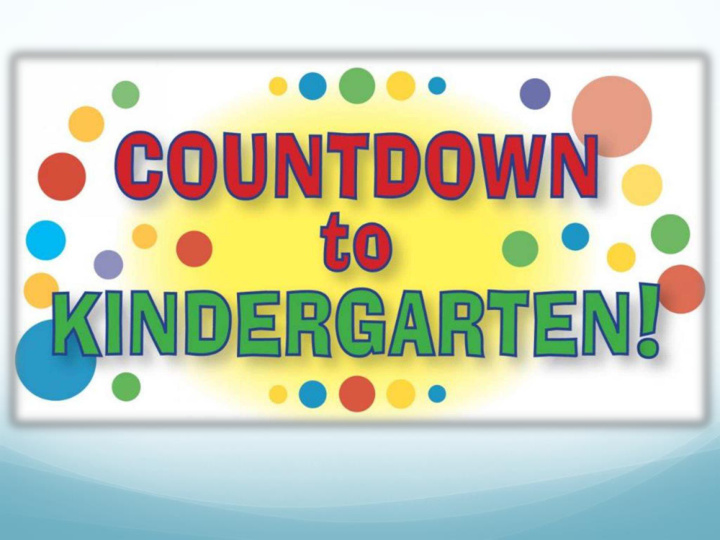



Welcome to Desert Mountain Kindergarten ! *Teamwork *Integrity *Growth
Why Choose Desert Mountain? Tight knit community Small family feel Caring and supportive staff Positive recognition – H.A.W.K. cards! Play based learning Special area classes: PE/Health, Music, Art, Technology/Comp. Sci. Very low teacher turnover – teachers love teaching at Desert Mountain! Computer Science Emphasis – ties into programs at Boulder Creek – building blocks of coding, maker spaces, builds problem solving skills
Registration Requirements Must be 5 years old on or before August 31, 2018 Original birth certificate or a certified copy Immunization records Proof of residence (utility bill, house payment receipt, rent receipt, escrow document or lease agreement Identification Legal guardian or custody papers (if applicable)
Daily Kindergarten Schedule Time Subject 8:00 Students report directly to kindergarten playground 8:15 – 8:45 Welcome, attendance, announcements, morning meeting, daily review 8:45 – 10:15 Reading instruction utilizing Reading Street materials (includes whole group and small group instruction with meaningful independent work stations) 10:15 – 10:45 Writing instruction – This time will often include a science and social studies connection as well as handwriting instruction (10-15 minutes) 10:45 – 11:30 Lunch/Recess/Restroom Break 11:30 – 12:40 Math instruction (Engage New York) 12:45-1:30 Specials (Music,Computer Science, Art and PE) / Teacher Planning Time 130-1:45 Snack 1:45-2:15 Science, Social Studies and Technology 2:15 – 2:40 RTI (Literacy) Small Group Instruction 2:50 Closure and Dismissal
Common Core The Common Core State Standards Initiative is an educational initiative in the United States that details what K – 12 students should know in English language arts and mathematics at the end of each grade. Academic standards are important because they help ensure that all students, no matter where they live, are prepared for success in college and the workforce. Standards provide an important first step — a clear roadmap for learning for teachers, parents, and students. Having clearly defined goals helps families and teachers work together to ensure that students succeed. They will also help your child to develop critical thinking skills that will prepare him or her for college and career.
English Language Arts Learning Expectations Naming upper-and lower-case letters, matching those letters with their sounds, and printing them Comparing the adventures and experiences of characters in familiar stories, such as fairy tales and folktales Retelling familiar stories and talking about stories read to them using details from the text Using a combination of drawing, dictating, and writing to describe an event, including his or her reaction to what happened Stating an opinion or preference about a topic or book in writing (e.g., My favorite book is . . .”)
English Language Arts Learning Expectations Taking part in classroom conversations and following rules for discussions (e.g., learning to listen to others and taking turns when speaking) Speaking clearly to express thoughts, feelings, and ideas, including descriptions of familiar people, places, things, and events Asking and answering questions about key details in stories or other information read aloud Understanding and using question words (e.g., who, what, where, when, why, how ) in discussions Learning to recognize, spell, and properly use those little grammatical words that hold the language together (e.g., a, the, to, of, from, I, is, are )
Mathematics Learning Expectations Counting objects to tell how many there are Comparing two groups of objects to tell which group, if either, has more; comparing two written numbers to tell which is greater Acting out addition and subtraction word problems and drawing diagrams to represent them Adding with a sum of 10 or less; subtracting from a number 10 or less; and solving addition and subtraction word problems Adding and subtracting numbers quickly and accurately (e.g., 3 + 1) Correctly naming shapes regardless of orientation or size (e.g., a square oriented as a “diamond” is still a square)
How to prepare for kindergarten Study the letters of the alphabet – your child should be able to see a letter and identify the letter name (begin with the letters of their name) Identify letter sounds (out of order) Focus on lowercase letters first! These letters make up 98% of what is written. Teach your child how to write his/her name – use a capital letter only for the first letter of his/her name and practice all other letters in lowercase.
How to prepare for kindergarten Read, read, read!!! Give your child a word and have him/her tell you what sound the word begins with – practice this along with the letters you are studying and discuss how every letter makes a sound. Use flash cards to study upper and lowercase letter names – mix them up and study them out of order. Play memory games or go fish with letter cards and do speed races to see how many letters your child can name within a minute. Read nursery rhymes and poems – talk about rhyming words
We Make Learning Fun!!
Recommend
More recommend